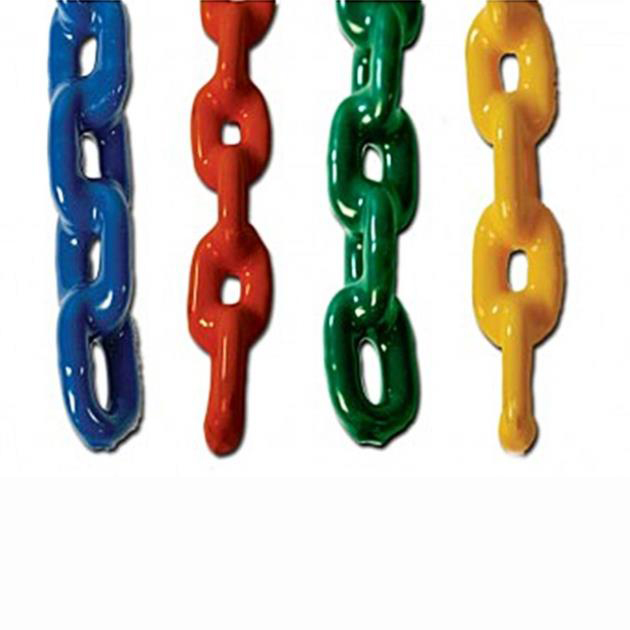Plastic spraying


Plastic spraying is a surface treatment method of spraying plastic powder on parts. Plastic spraying is what we often call electrostatic powder spraying coating. Its treatment technology is a more common decorative technology of metal surface treatment in the world since the 1980s. Compared with ordinary painting surface treatment, this technology has the advantages of advanced technology, energy saving and high efficiency, safety and reliability, bright color and so on. Therefore, it is often used in the field of light industry and household decoration. Its working principle is to charge the plastic powder through the high-voltage electrostatic equipment, spray the coating on the surface of the workpiece under the action of the electric field, and the powder will be evenly adsorbed on the surface of the workpiece to form a powdery coating; The powder coating is leveled and solidified after baking at high temperature, and the plastic particles will melt into a dense final protective coating with different effects; Firmly attached to the workpiece surface.
The plastic powder is charged through high-voltage electrostatic equipment. Under the action of electric field, the coating is sprayed on the surface of the workpiece, and the powder will be evenly adsorbed on the surface of the workpiece to form a powdery coating; The powder coating is leveled and solidified after baking at high temperature, and the plastic particles will melt into a dense final protective coating with different effects; Firmly attached to the surface of the workpiece, plastic sprayed products are mostly used for indoor boxes, and the paint film presents a flat or matte effect. Plastic spraying powder mainly includes acrylic powder, polyester powder, etc.
Advantage
No thinner is required, and the construction has no pollution to the environment and no toxicity to human body; The coating has excellent appearance quality, strong adhesion and mechanical strength; The curing time of spraying construction is short; The corrosion and wear resistance of the coating is much higher; Primer is not required; Simple construction and low technical requirements for workers; The cost is lower than the painting process; Some construction sites have clearly proposed that electrostatic plastic spraying process must be used; In the process of electrostatic powder spraying, there will be no common flow phenomenon in the painting process.
Process principle
The corona discharge phenomenon is used to make the powder coating adsorb on the workpiece. The process is as follows: the powder coating is sent to the spray gun by the powder supply system through compressed air gas, and the high voltage generated by the high-voltage electrostatic generator is added at the front end of the spray gun. Due to corona discharge, dense charges are generated near it. When the powder is ejected from the gun nozzle, charged coating particles are formed, which are attracted to the workpiece with opposite polarity under the action of electrostatic force, With the increase of sprayed powder, the charge accumulates more. When it reaches a certain thickness, due to electrostatic repulsion, it will not continue to adsorb, so that the whole workpiece can obtain a certain thickness of powder coating, and then the powder is melted, leveled and solidified by heating, that is, a hard film is formed on the surface of the workpiece.
Technological process
1. Pretreatment:
Objective: to remove the oil, dust and rust on the surface of the workpiece, and generate a "phosphating layer" which is anti-corrosion and can increase the adhesion of the sprayed coating on the surface of the workpiece.
Main process steps: oil removal, rust removal, phosphating and passivation. After pretreatment, the surface of the workpiece is not only free of oil, rust and dust, but also a uniform and rough gray phosphating film which is not easy to rust is generated on the original silver white shiny surface, which can not only prevent rust, but also increase the adhesion of the plastic spraying layer.
2. Electrostatic spraying
Purpose: spray powder coating evenly on the surface of workpieces. Special workpieces (including positions prone to electrostatic shielding) should be sprayed by high-performance electrostatic spraying machine.
Process steps:
Using the principle of electrostatic adsorption, spray a layer of powder coating on the surface of the workpiece evenly;
The fallen powder is recovered through the recovery system and can be reused after screening.
3. High temperature curing
Objective: to heat the powder coating on the workpiece surface to the specified temperature and hold it for corresponding time to melt, level and solidify it, so as to obtain the desired workpiece surface effect.
Process steps: push the sprayed workpiece into the curing furnace, heat it to the predetermined temperature (generally 185 degrees) and keep it warm for the corresponding time (15 minutes); open the furnace and take it out for cooling to obtain the finished product. Generally, the heating temperature and holding time are different for different workpieces.
Prompt: heating and control system (including electric heating, oil, gas, coal and other heating methods) + insulation box = curing furnace.
4. Discharge cooling
Discharge cooling is a process to cool the results of the plastic spraying process and return it to normal temperature.
5. Decorative treatment
Objective: to make the workpiece after electrostatic spraying achieve a special appearance effect, such as various wood grain, pattern, brightening, etc.
Process steps: shading; Transfer printing and other treatment processes.

 NDUSTRIAL PARK, YANGLIU TOWN, XINTAI CITY, CHINA.
NDUSTRIAL PARK, YANGLIU TOWN, XINTAI CITY, CHINA. +86 0538 7221799
+86 0538 7221799 +8615069899901
+8615069899901
 Home
Home
.png)
